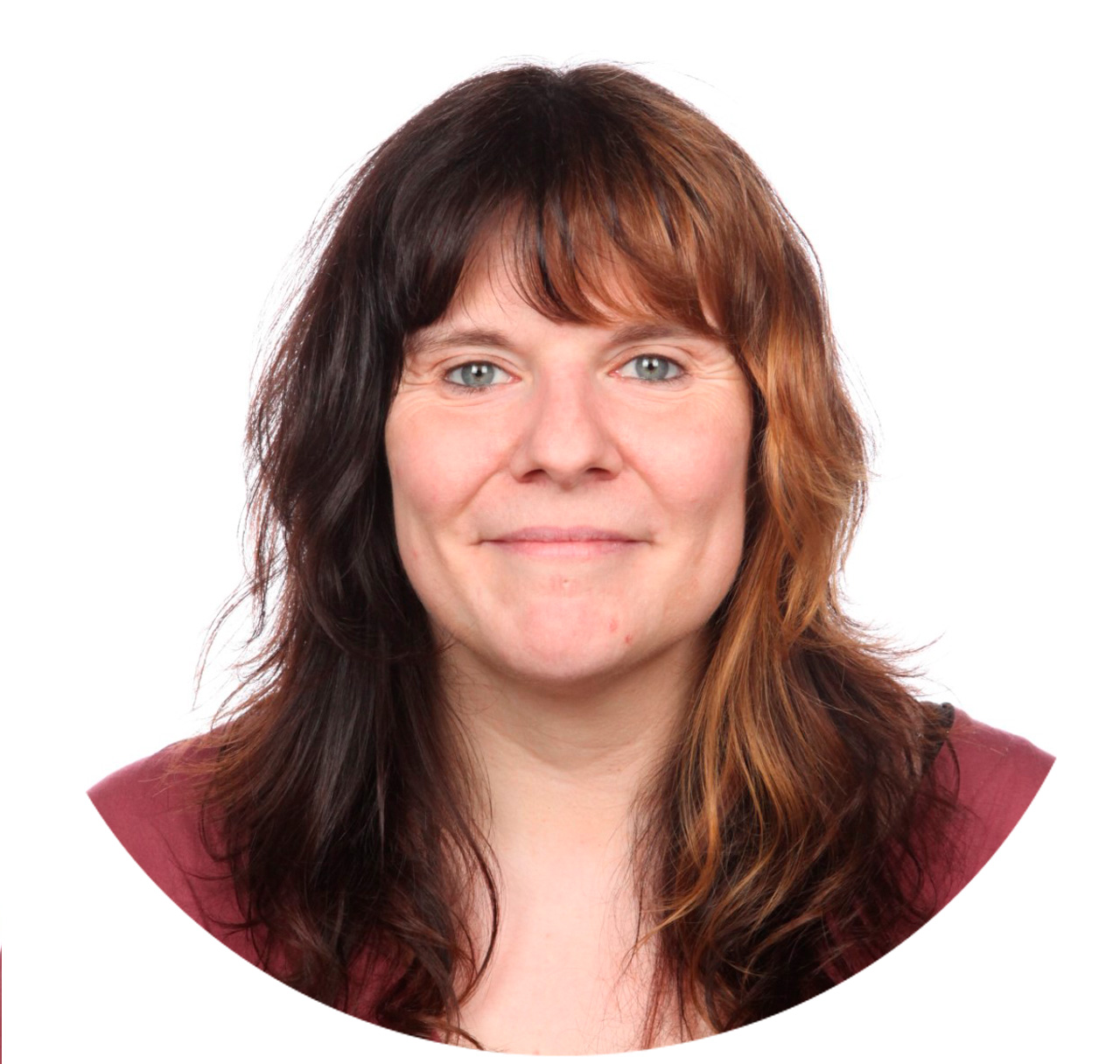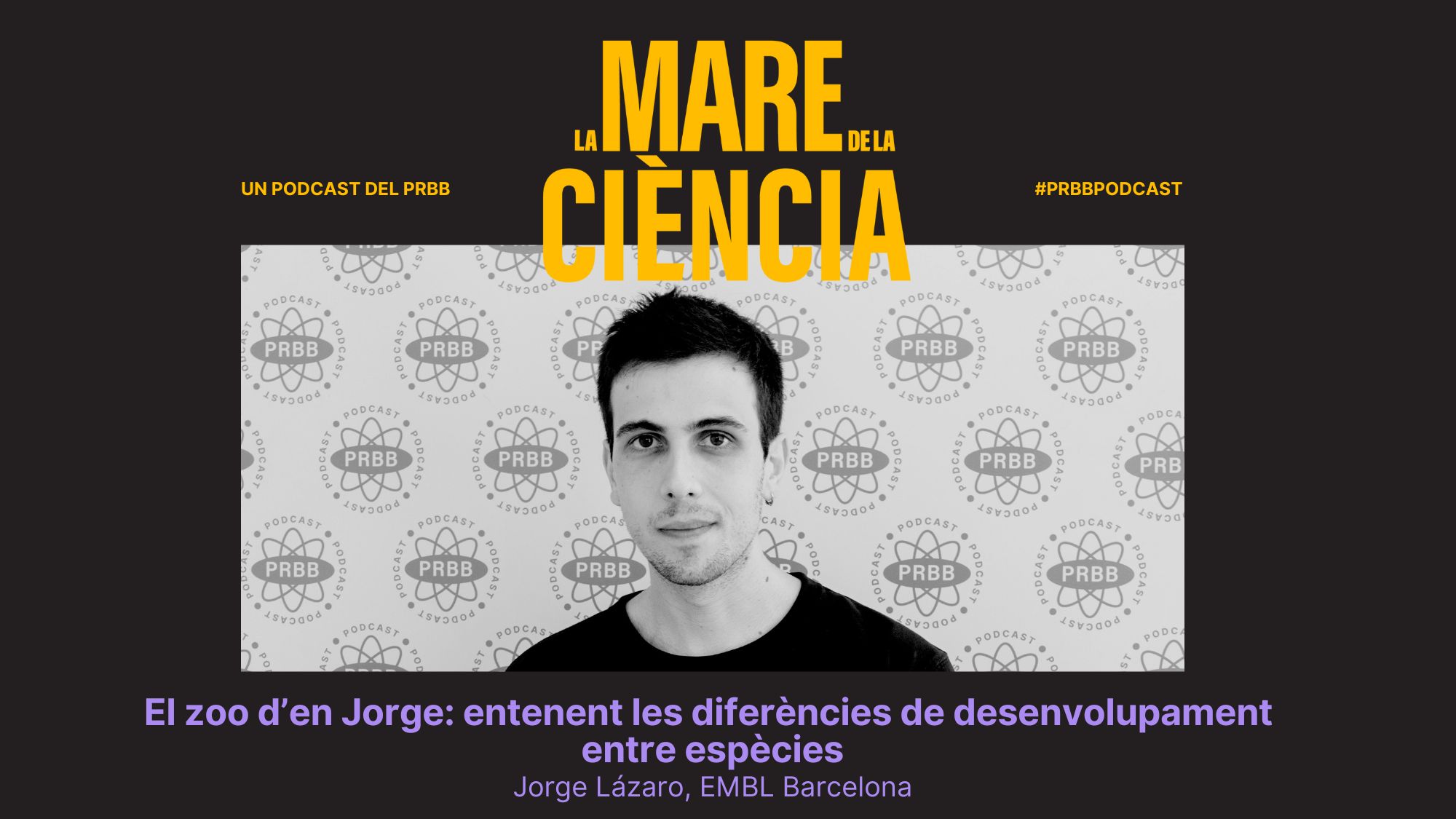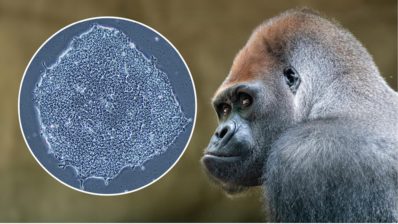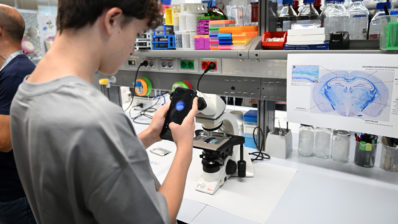All vertebrate embryos are very similar in the early stages of development. However, the rate at which they develop is very different, even though they produce the same structures: arms, legs, head, heart… For example, a human embryo takes 60 days to develop, while a mouse embryo takes only 20 days. Why do different animal species develop at different speeds?
This is what Jorge Lázaro, a biochemist in his final year of a PhD with Miki Ebisuya at the European Molecular Biology Laboratory – Barcelona (EMBL Barcelona), is studying. The lab studies the pace of embryonic development using stem cells. Ebisuya‘s team is analysing the formation of somites, embryonic structures that give rise to vertebrae, back muscles and ribs. These somites are formed sequentially, at fixed time intervals, so that they function like a cellular clock. Ebisuya had observed that they form every 1.5 hours in a mouse embryo and every 5 hours in a human embryo.
“We want to discover the basic universal principles that regulate this developmental process in all animals”
Jorge Lázaro, EMBL
Jorge Lázaro is extending this research by investigating the speed of development of embryos from different vertebrate species. To this end, he has created an embryonic cell zoo with cells from mice, humans, rabbits, cows, marmosets and rhinos. He is currently trying to understand what genetic control determines the speed of embryonic development. “We want to discover the basic universal principles that regulate this process in all animals”, he says.
We also talk to him about research as an exciting but way of life – but one that comes at a cost. He explains that when working with stem cells, it is necessary to go to the lab every day to change the medium, to “feed them”. “Research is a different but very beautiful job. It demands certain sacrifice at times, but it is very rewarding”, explains Jorge. One of the things the young researcher likes most about being a scientist is the opportunity to travel. “Travelling is an essential part of research. Science is done globally and it is important to be willing to see new places and how they do things in different countries”, he says.
Don’t miss the interview with Maruxa Martínez-Campos and discover how this international zoo was created!







